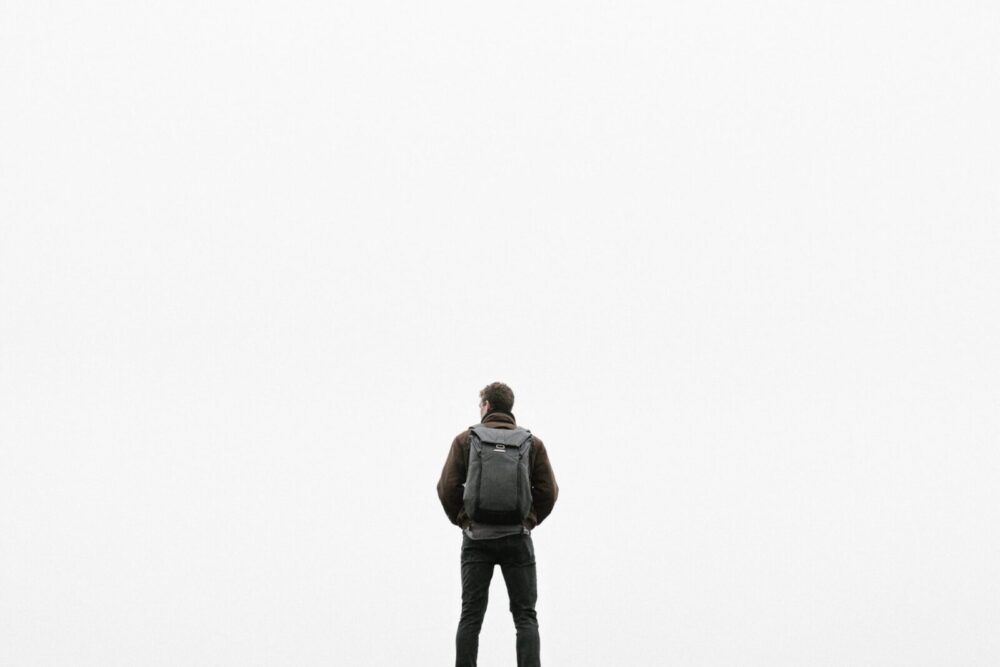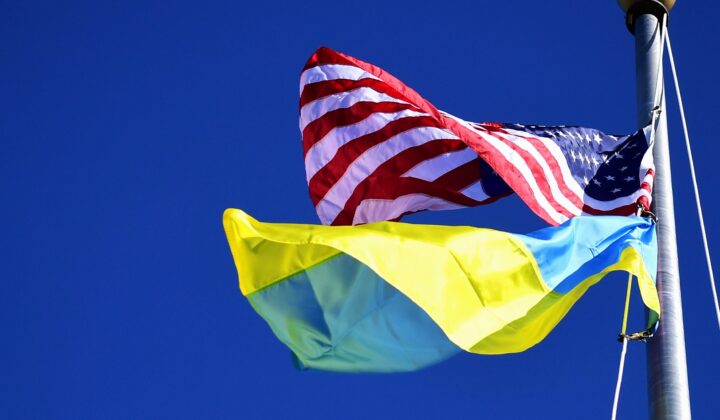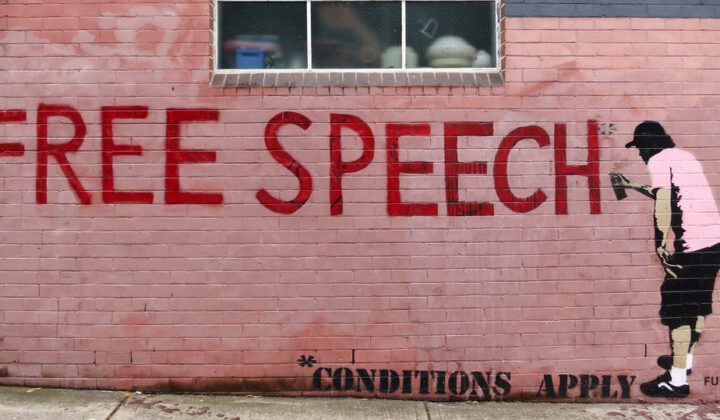America’s Loneliness Epidemic
As COVID-19 enters its third wave, American states and foreign countries have begun entering a new series of lockdowns. While governments must do what they can to prevent needless death, one year of quarantine has only exacerbated the growing epidemic of American loneliness.
Although not a medically diagnosable illness, loneliness is the mental condition of feeling emotionally isolated from others, regardless of physical proximity: one can feel lonely even when surrounded by coworkers.
This phenomenon is associated with increased physical and mental health risks. According to the CDC, loneliness correlated with a 50% increase in dementia, a 29% increase in heart attacks and a 32% increase in strokes. Heart failure patients who felt lonely were 4 times more likely to die than their socially-connected peers. In fact, chronic loneliness is just as dangerous for one’s health as smoking 15 cigarettes a day.
Even before the pandemic, Americans were growing more lonely. 17% of Americans report having no close friends or family members. 50% of Americans regularly keep in touch with only 3 or fewer friends or family members. In 2019, a record high 61% of Americans said they were lonely.
A year of social distancing has especially impacted the 36 million Americans who live alone. A study in April demonstrated that just one month of quarantine had already tripled depression in America, consistent across age, gender, education, and income. 13% of Americans have started or increased substance abuse. And 25.5% of young adults considered suicide in August, compared to 10.7% in 2018.
1. How else does social isolation affect our democracy?
Loneliness isn’t just a health or psychological problem.
Those with fewer connections to society are less likely to value our existing democratic system and more likely to vote for ‘outsider’ candidates. In 2020, voters with large social networks were more likely to vote for center-left Joe Biden, but socially-isolated voters preferred the extreme candidate Donald Trump.
Moreover, in the 2016 Democratic primaries, those voters most likely to be socially isolated (young, less-educated men) were more likely to support democratic socialist Bernie Sanders over center-left Hillary Clinton. This was despite the fact that their own stated policy positions often leaned closer to the more centrist candidate.
Across the political spectrum, lonely, alienated voters are more willing to vote for radical changes that can destabilize not only our society, but our democracy.
2. How do we tackle this epidemic of loneliness?
First, we have to recognize its root causes. Institutions that traditionally provided community and meaning are deteriorating. Not only are Americans less religious, but even the faithful are attending fewer services. Service club memberships, like the Elks’, have drastically dwindled. Even our familial ties are collapsing. In 2019, the marriage rate hit an all-time low of 33 marriages per 1,000 single adults (in 1970, that number was 86). Regarding local communities, 23% of young Americans cannot name even one of their neighbors.
Although it is not readily apparent how to solve these complex societal problems, there are some things we can do.
For example, we can build a pandemic plan that more consciously addresses the need for human contact. Harvard Medical School professor Julia Marcus has suggested that local governments could use outdoor public spaces––like firepits or ice-skating rinks––to help people be in communal spaces while also social distancing.
Furthermore, researchers have found that, at least during non-pandemic times, decreasing social media usage reduced loneliness and depression among young Americans. A majority of Americans also say the pandemic has made them appreciate their partner more and deepened their commitment to their marriage. In other words, one solution might be to spend less time on screens and more time with those with whom we live.
Perhaps most importantly, we must acknowledge that loneliness is a real problem that threatens not just our country, but our democracy. We should address it like the national emergency it is.
___

Russia Hacks America in Unprecedented Attack
On December 13th, the New York Times reported that U.S. officials suspected Russian hackers had broken into a slate of federal agencies through a network management software company known as SolarWinds. The scope of the hack has since been revealed to include DHS, CDC, Commerce Department’s NTIA, the State Department, the Justice Department, parts of the Pentagon, a number of utility companies, and, potentially, more than 425 Fortune 500’s. As of now, it’s unclear what exactly was taken by the hackers. However, what is clear is that they have had access to extremely sensitive material for months, perhaps even since March. The scope of this hack is virtually unrivaled.
The hack was discovered by a private cybersecurity firm called FireEye, which companies and government agencies often use to probe their own defensive vulnerabilities. Even the National Security Agency, which also uses SolarWinds software, wasn’t aware of this latest hack until it was alerted by FireEye. Now it suspects that this intrusion was done by APT29, otherwise known as Cozy Bear, an outfit of the Russian intelligence services. APT29 inserted malicious code into SolarWinds’ own code, which was then distributed to the company’s customers. The code gave APT29 a backdoor into the systems using SolarWinds’ software.
Ultimately, it seems the Russian government once again found our weaknesses and exploited them. As our nation was focused on securing its election infrastructure, the Kremlin took advantage of other vulnerabilities.
1. Who are APT29, and for what else are they responsible?
APT29 are a Russian state-backed group who are perhaps best known for their hack of the Democratic National Committee in 2016. They’ve also been responsible for attacks in South Korea, Germany, and Uzbekistan, as well as, allegedly, attempting to steal COVID-19 data from pharmaceutical companies and academic institutions worldwide. They’ve been known to go after sensitive and confidential data held by government institutions, private companies, think tanks, and various political organizations.
2. What is the government doing about it?
It’s unclear. On Monday, the Cybersecurity & Infrastructure Security Agency (CISA) put out an emergency directive that implored all affected federal agencies and companies to review their networks, assess the damage, and secure themselves from future attacks.
For its part, the White House has said nothing publicly, although NSA O’Brien returned from a trip abroad to evaluate the situation. Elsewhere, Secretary Pompeo, in an interview with Breitbart, deflected from Russia’s cyber intrusion by emphasizing attempted attacks from China and North Korea, saying: “We see this even more strongly from the Chinese Communist Party, from the North Koreans, as well.” And on Tuesday, Congress received a classified briefing on the cyberattack.
The New York Times reports that government analysts were alarmed by the possibility that the federal government was once again caught off-guard by such a brazen attack from the Russians. Perhaps most troublingly, it was the private sector rather than our own government agencies, which have spent tens of billions of dollars on offensive cyber capabilities, that detected the hack. As our country transitions to a new administration, we must shore up weaknesses in our cyber capabilities to secure our nation from such attacks.

Journalism at Work: New York Times Pornhub Exposé Sparks Change
On December 4th, the New York Times published a report blasting the pornography site Pornhub for turning a blind eye toward nonconsensual videos uploaded to its platform. The piece profiled courageous victims who shared their stories about experiencing trauma after explicit underage footage of them was published on the site. Encouragingly, this exposé has already started a much needed reckoning.
The Times piece, written by columnist Nicholas Kristof, details how weak moderation and verification policies allow the site—which is visited more than Netflix, Yahoo, or Amazon—to profit off of exploitative videos, including those showing the assault of underage victims. Prior to Kristof’s article, the site allowed any user to upload or directly download videos, facilitating the proliferation of these illegal videos.
The response to Kristof’s piece was swift and sweeping, though much remains to be done. Four days after the article’s publication, Pornhub announced a new set of policies that echoed Kristof’s recommendations, including blocking uploads from unverified users, removing its download feature, more robust moderation, and greater transparency.
Kristof commented that the changes “seem significant” if the company follows through. Then on Monday morning, Pornhub removed the more than 10 million unverified videos on their site, reducing the number on the platform from 13.5 million to 2.9 million. Mastercard, Visa, and Discover also banned the use of their cards to pay for services on the platform (American Express already had a broad policy against using their cards for adult content).
A political consensus to crack down on the porn industry may also be forming. A bipartisan group of senators introduced legislation to make it easier for victims to sue pornography companies that profit from their assaults, and Senator Jeff Merkley (D-OR) is drafting additional bipartisan legislation that would regulate pornography companies more tightly. Canadian Prime Minister Justin Trudeau, whose country hosts the Pornhub platform, also says his government is working on new regulations on internet porn.
1. What does this story say about the relationship between journalism and politics?
Kristof’s story seems to have led to real change, serving as a testament to the power of high-profile journalism. However, it also underscores the extent to which important issues can remain largely ignored until they are highlighted by the right newspaper or reporter.
Other journalists have written similar articles about Pornhub for years. Activists and victims’ organizations have long been pushing for these changes. And notably, before Kristof’s piece, Trudeau’s government was contacted twice about Pornhub, but didn’t answer either time. That being said, what’s transpired over the past several weeks is the fourth estate at work, exposing wrongdoing, prompting society-wide conversation and substantive change.
It’s essential that we continue to press for change. Kristof points out that XVideos, which is even more popular than Pornhub, and so many other sites still offer repugnant content catering to pedophiles. Facebook, Instagram, and Twitter are also part of the problem but have largely escaped this wave of criticism; over the past three years, Facebook alone has reported 84 million instances of child sex abuse material.
Although there is much work to be done, the overwhelmingly positive response to Kristof’s article brings hope that society will pursue justice for the victims of these abuses and will make the systemic change that we need.





